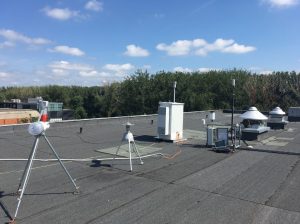Real-time detection and quantification of bioaerosols relevant for human and plant health
BREATHE project is supported by the Science Fund of the Republic of Serbia within the program PROMIS (grant no. 6039613) with the overall budget for 24 months of implementation of 171064.5 EUR. The project is coordinated by dr Branko Šikoparija, senior research associate at BioSense Institute (University of Novi Sad), while the team members are dr Sanja Brdar, dr Gordan Mimić, dr Marko Panić and Predrag Matavulj from BioSense Institute and Dragana Bartolić from Institute for Multidisciplinary Research (University of Belgrade). The overall goal of the BREATHE project is to set the foundation for advanced IT-based real-time atmospheric diagnostics in Serbia.
BREATHE project will advance knowledge needed for automatization in aerobiological research. The team plans to adress problems of comparability to classical Hirst type volumetric measurements and using the complex data coming from flow cytometry.
In addition to development advanced AI-based classification models, BREATHE will focus on unveiling black-box in order to indicate contributions of each part of data at the input. This is expected to result in better classifications by the involvement of domain knowledge in primarily data-driven models. Particular attention will be given to the transfer learning and ensuring that models for bioaerosols classification, developed by BREATHE project, are applicable for measurement signals collected on different devices. Advanced image reconstruction tools will be tested for the new representation of scattering measurements. Also, the variability of fluorescence emission for chosen bioaerosols of different age and humidity levels will be explored in parallel by using Rapid-E flow cytometer and benchtop spectrofluorometer.

Figure 1. BREATHE project team at the kick-off organized online due to COVID19 restrictions
BREATHE project will collect the data in Novi Sad with Real-Time Airborne Particle Identifier (Rapid-E) from “Plair SA”, Hirst type samplers and automated weather station. The approach that includes comparison to the standard method (EN16868:2019) enables promotion of achievements to end-users in the aerobiological community which will include support to new users of automatic bioaerosol monitors.

Figure 2. Two Hirst type samplers, Rapid-E device and automated weather station located in Novi Sad